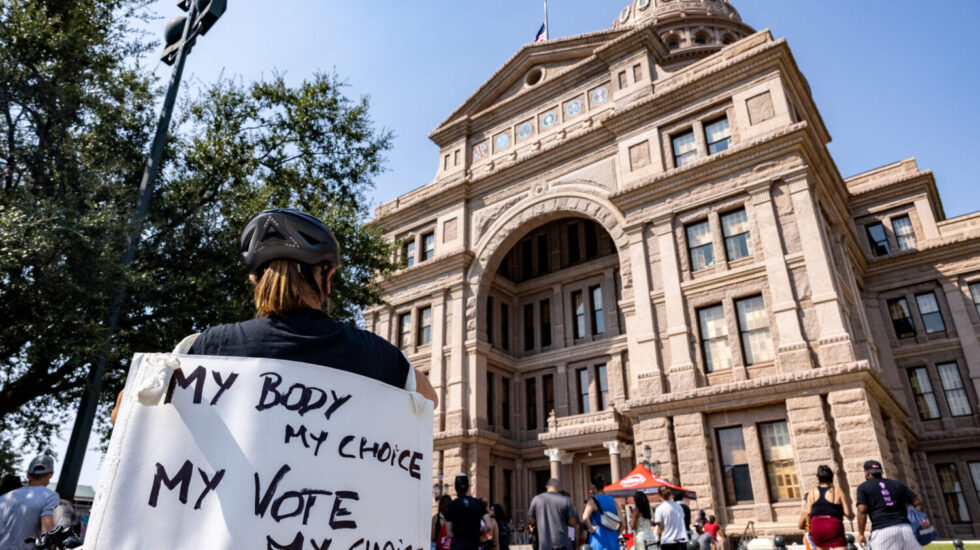Texas’ controversial ban on abortion – which outlaws the procedure after a fetal heartbeat could be detected, around the 6th week of pregnancy – has forced thousands of women to travel out of the state to seek reproductive health care.
The constitutionally-dubious law, codified in Senate Bill 8, went into effect last September. In the first four months of its existence, approximately 5,574 women left Texas to get an abortion, according to a new report from researchers at The University of Texas. That’s nearly 1,400 out-of-state abortions per month – a 10-fold increase from the same period a year before, when an average of 142 women left Texas per month to seek an end to their pregnancies.
Some Texans have traveled as far as Illinois, Maryland, and Washington to receive an abortion. But one state has born the brunt of the increased outflow: Oklahoma. From the UT report:
Almost half (45%) of Texans who traveled out of state between September and December 2021 obtained abortion care in Oklahoma. Oklahoma has just four facilities that provide abortion, and the number of Texans seen each month at these clinics since SB 8 went into effect is more than twice the monthly average of all abortion patients seen in Oklahoma in 2020.10 The nearest Oklahoma facility is nearly 200 miles (over three hours) from Ft. Worth, Texas and 450 miles (seven and a half hours) from Houston. To obtain an abortion in Oklahoma, people first must receive state-directed counseling and then wait at least 72 hours; minors are also required to notify a parent and obtain parental consent before receiving abortion care.
Twenty-seven percent of women leaving Texas for an abortion traveled to New Mexico.
The UT researches spoke to dozens of Texans that sought an abortion out-of-state:
Participants described contacting multiple facilities in other states to try to find the location with the earliest appointment, and some booked a visit that was weeks away in case they could not find something sooner.
Given the long wait times at some locations, many participants were unable to get an appointment at the nearest out-of-state facility and had to travel even farther to obtain care.
Arranging travel logistics was stressful for many participants because they had to miss work and/or school and find childcare for a full day or more; many working in the gig economy or without access to paid leave lost wages. The cost of gas or flights, hotel stays, and food totaled between several hundred and several thousand dollars.
“The need for abortion doesn’t magically go away,” Abigail Aiken, an associate professor of public affairs at UT’s LBJ School, told Axios. The data “offers us a glimpse into what may well happen if you severely restrict or outlaw abortion altogether.”
